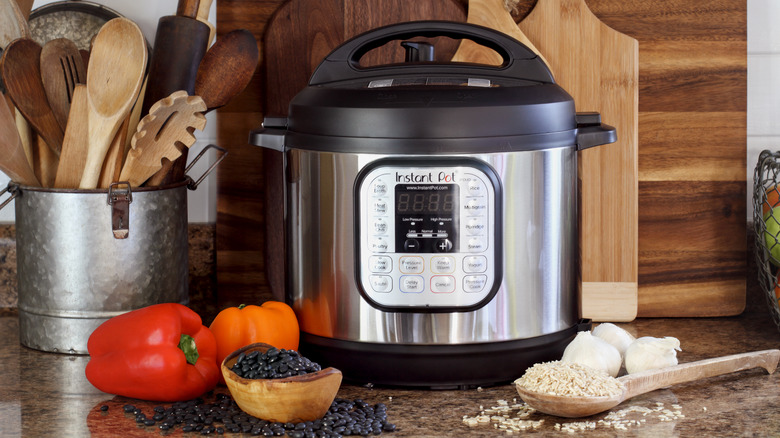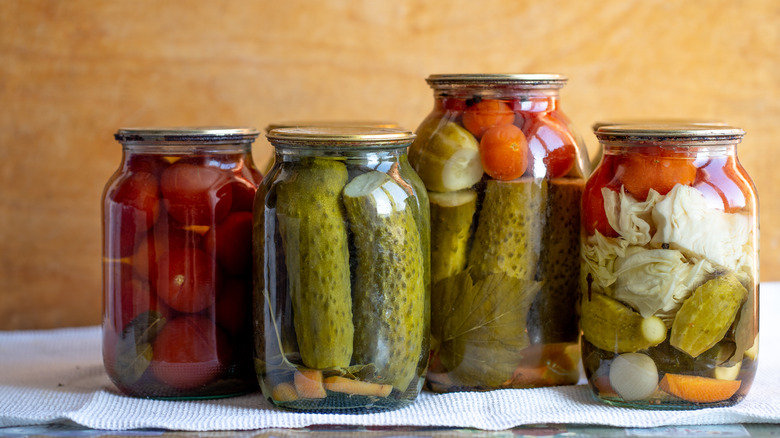Why You Probably Shouldn't Can Food In Your Instant Pot
You can thank the French Revolution for bringing canned goods to your pantry. According to Smithsonian Magazine, in 1795, the French army was plagued by food spoilage, and longstanding preservation methods like pickling and fermentation weren't always safe. In response to this crisis, the army issued a desperate plea to the public: Anyone who could devise a reliably safe way to preserve food in the long term would receive a handsome reward of 12,000 francs. The incentive was enough for candymaker Nicholas Appert to take on the challenge. Although it took 14 years of experimentation, Appert ultimately invented canning in 1809. Per Britannica, Appert's method was no different than the home canning process today: Seal the food in an airtight jar and heat it, after which a vacuum seal will form as it cools.
Appert's method worked, but the thing is, nobody knew why. Not even Appert understood the science his invention was based on. According to Britannica, it took 50 years for someone to find the answer, and that person was Louis Pasteur, the namesake for pasteurized milk. It was actually a rather simple answer. According to HowStuffWorks, canning is all about keeping bacteria out of your food. The heating process kills any that are already present, while the airtight seal prevents more bacteria from getting in. Without this effect, canning wouldn't work, and that's exactly why it's risky to can food in an Instant Pot.
It could leave bacteria in your canned food
It's easy to see why the Instant Pot knocked the socks off home cooks as soon as it debuted. A slow cooker that also makes cheesecake? That's some Jetsons-type stuff right there. But, alas, even the Instant Pot has its limits, and canning is one of them. This might surprise you, considering Instant Pot released a model in 2018 that had a specific canning feature (via CNET). Instant Pot claims that its canning process works by steaming the cans under intense pressure, 15 PSI to be exact. Per Reviewed, the pressure should be enough to heat the steam over 240 degrees F, which is the temperature you need to kill the bacteria that causes botulism. It sounds good in theory, yet officials have warned users to avoid this function.
The National Center for Home Food Preservation explains that pressure isn't all that's important for canning; it's the heat that really does the job. The Center warns reaching the correct pressure doesn't guarantee you get the right temperature. A lot could go awry. For instance, if there is air trapped in the Instant Pot, it won't heat up to the same temperature as the steam, even when the correct pressure has been achieved. Reviewed also expresses concern that 15 PSI may achieve different temperatures at different altitudes. In general, it's safest to stick with the traditional water bath method.

